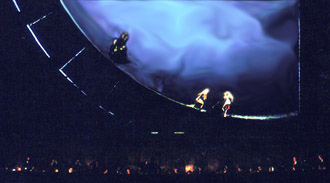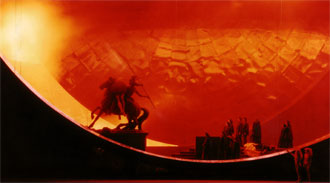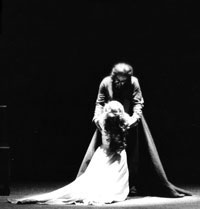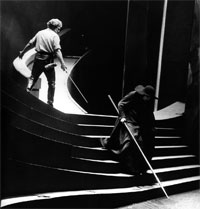
Wagner
myth, tale, music
the Tetralogy of Ronconi and Pizzi in Florence

|
A story begins and it already has its ending: everything comes back. The events that are to happen will be arranged one after the other, indomitably, on on the thread of the story; but this same line, which seems to run straight ahead, will instead curve slowly, until it reaches the point of departure: this is how the line that draws a circle bends. The person telling the story sees the complete design and knows the ending: point by point, piece by piece, goes back over that circular path.
|


|
After many years this slim, compact book, edited by Musica Viva/N.I.M., seems to me like something sealed, from which transpires a strong sign of a layered emotion, of an adventure of knowledge, of an unforgettable lesson of theater in music and more.
 After many years, this book is still read and consulted in some corner of the world (the cultural Institutes of Vancouver and Barcelona, for instance) or in the silence of some library (in Milan, the Sormani or Triennale). This book is not only the result of a totally absorbing experience, but also a concrete witnessing, although sui generis, of a Ring which has been and will continue to be important in the history of Wagnerian production and staging. |
|
It’s a book to read. Those who know Tetralogy can find an explanation of what this interpretation has been and why. Those who don’t know it can quite easily read the beautiful story of a theater rite of dangerous heroism, of sublime music, of dazzling sacrifice, as a fact of culture, something to investigate, a fairy tale, a reality.
(from the preface of Lorenzo Arruga) |

|
Regarding this production, I was called here and there to give my contributions, and I especially remember that of the Polytechnic of Milan, as part of a particular composite seminar. I have no trace of these lectures now. Instead I will relate other works on Luca Ronconi and Richard Wagner.
|